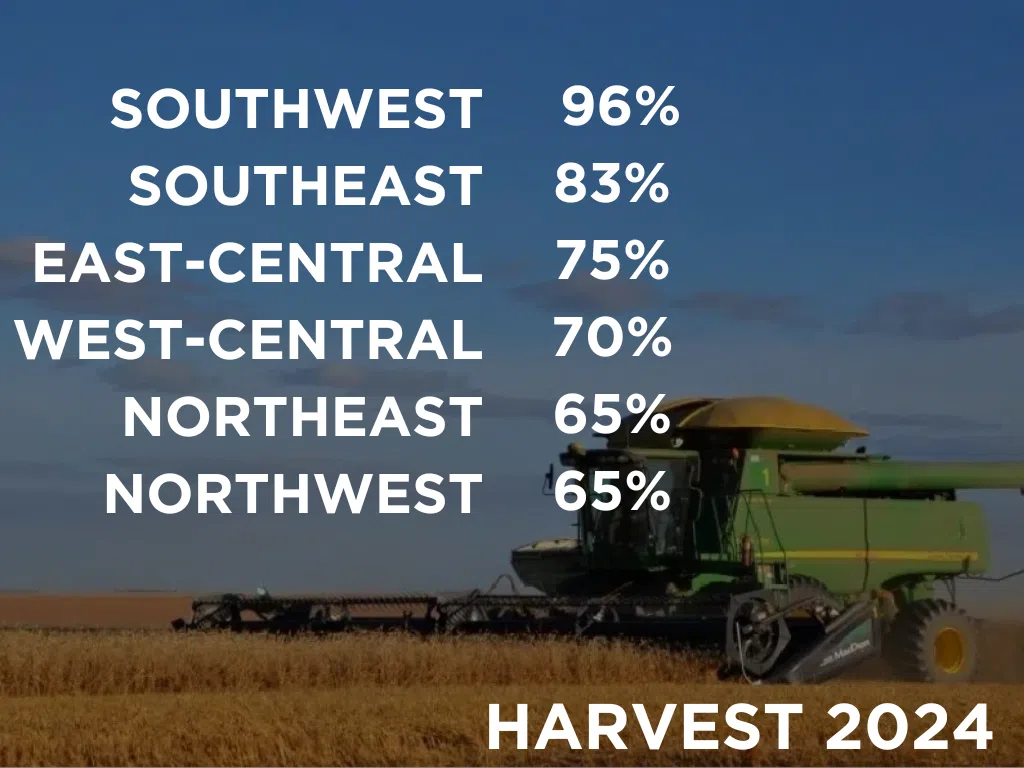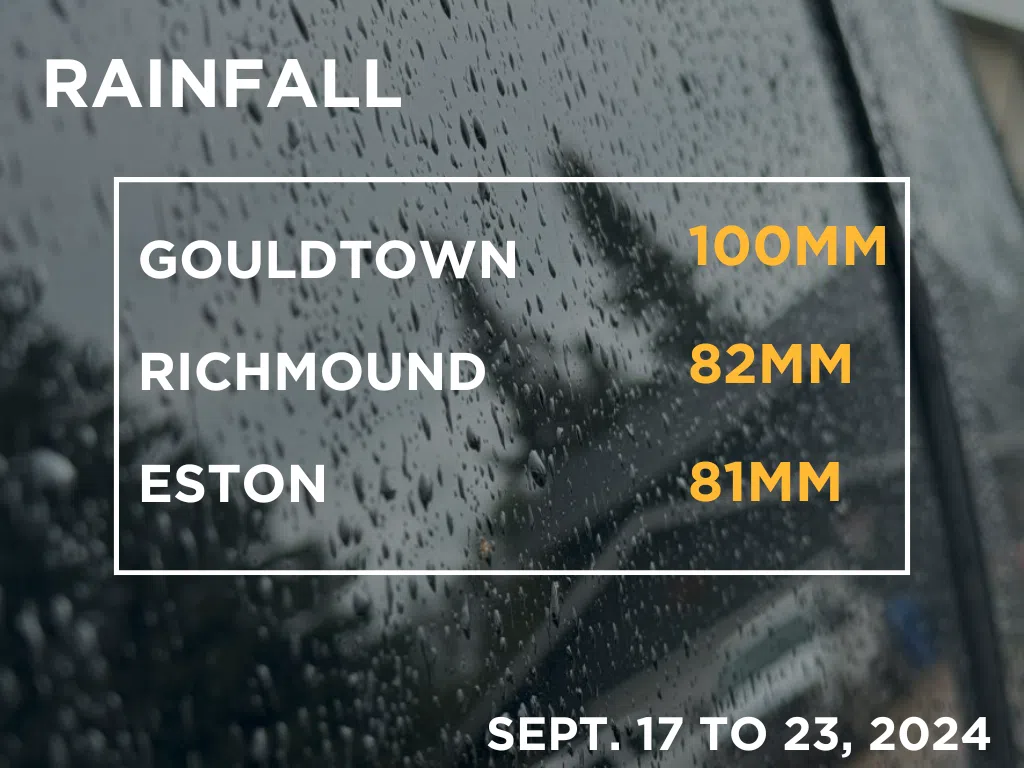Rainfall slowed Saskatchewan farmers down over the past week as they worked to get their 2024 crops harvested.
According to the weekly crop report from the Ministry of Agriculture, which covered the week ending on Monday, harvest is 79 per cent complete across the province. That’s up just four per cent since last week’s report, but still ahead of the five-year average of 75 per cent and the 10-year average of 69 per cent.

Harvest statistics for September 17 to 23, 2024, Crop Report. (Graphic by Céline Grimard, Photo by 650 CKOM)
“Although moisture has helped replenish topsoil moisture conditions and green up pastures for fall grazing, it has also caused concerns for downgrading of crop quality in areas yet to be harvested,” the ministry noted. “Producers in many regions are hopeful for drier conditions in the upcoming weeks to help with harvest progression.”

Rainfall statistics for September 17 to 23, 2024, Crop Report. (Graphic and photo by Céline Grimard)
The winter wheat, triticale and field pea harvests are complete, the report noted, with fall rye and lentil crops close behind.
When it comes to spring-seeded cereals, the durum harvest is sitting at 95 per cent complete, while the barley harvest is 85 per cent done and 85 per cent of spring wheat is in the bin.
Three-quarters of the oat crop has been harvested, along with 68 per cent of the canary seed crop, while 93 per cent of the province’s chickpeas have been harvested.
On the oilseed front, 93 per cent of this year’s mustard crop is in the bin, along with 56 per cent of the canola crop.

Cropland moisture statistics for September 17 to 23, 2024, Crop Report. (Graphic and photo by Céline Grimard)
“Flax and soybeans are the furthest behind in harvest completion at 42 per cent and 32 per cent complete, respectively,” the report noted.
While rain did slow down harvest in several regions, the report noted that the moisture was welcomed by many producers who have been struggling with dry topsoil conditions.
“As producers evaluate livestock water supplies moving into the fall, 59 per cent indicate there are no shortages occurring or anticipated with 31 per cent indicating they have moderate shortages,” the ministry wrote. “Additionally, 85 per cent of producers reported no concerns about water quality for their livestock. Producers in the southwest and west-central regions of the province are expressing higher concerns about livestock water shortages and reduced water quality.”
According to the report, crop damage over the past week was brought to you by the letter w: wind, wildlife and waterfowl.
“As producers continue with harvest, they are also busy baling, hauling bales, fencing, cleaning corrals, harrowing combined fields and spraying for fall weed control,” the ministry explained.
“Additionally, some winter cereal seeding operations have commenced across the province.”
A complete version of the report can be found on the Government of Saskatchewan’s website.











